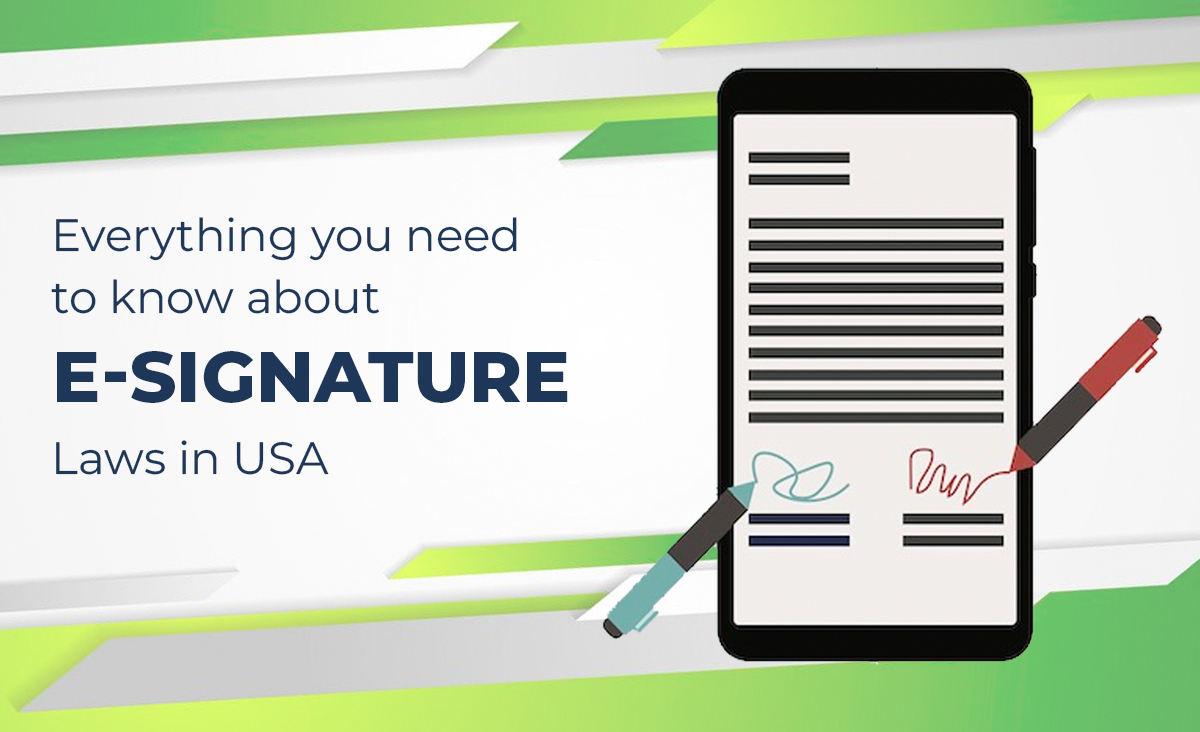In today’s digital era Electronic Signature or E-Signature. It has become an important part of business operations. legal agreement and many other documents, electronic signatures provide convenience, efficiency, and security. But it’s important to understand the legal framework surrounding its use. Electronic signature laws in the United States govern the validity and enforceability of electronic signatures. This ensures that signatures are as legitimate as pen-and-paper signatures. This blog provides a comprehensive overview of electronic signature laws in the United States. complete history Important rules and best practices
Evolution of Electronic Signature Law
Electronic signatures have come a long way since the advent of the Internet and the development of digital technologies. Legal recognition of electronic signatures in the United States can be found in the Electronic Signatures in Global and National Commerce (ESIGN) Act, a law signed into law by President Bill. Clinton on June 30, 2000
The Designation Act, along with the Electronic Transactions Act (UETA), has been adopted by 49 US states. Establish a legal framework for electronic signatures in the country. These actions ensure that electronic signatures are legally equivalent to traditional handwritten signatures. It promotes the adoption of digital signatures across industries and sectors.
Understanding the Design Act
FEDERAL LAW The Designation Act establishes the legal framework for electronic signatures in the United States. The main provisions of the Design Act are:
- Legal Equivalence: The Designation Act provides that electronic signatures are equivalent to traditional ink signatures. When legal requirements are met.
- Consent: The parties must consent to electronic signatures as provided by law. Consent can be achieved in many ways, such as express terms in the contract or user actions (eg clicking the “I agree” button on the site).
- Preservation and Access: The Act is designed to ensure that electronic records are as enforceable as paper documents. This information is properly stored and accessible.
- Consumer Disclosures: The Act contains specific requirements for consumer transactions. It requires consumer disclosure and consent in an easily understandable format.
The role of UETA
Although the Designation Act serves as a federal norm, the Uniform Electronic Transactions Act (UETA) plays a crucial role in shaping electronic signature laws at the state level. UETA has been adopted by 49 states and the District of Columbia, providing enforcement of electronic signature regulations within those jurisdictions. General UETA orders. principles of design act. However, some state-specific forms are allowed.
It should be noted that while most states have adopted UETA, some states have their own electronic signature laws. If you are conducting business or contracting with parties in different states, you should be aware of changes in electronic signature laws.
Electronic Signature Use Cases
Electronic signatures can be used in a variety of situations, including:
- Business Contracts: Electronic signatures are often used to enforce business agreements such as contracts and partnership agreements. and vendor agreements
- Real Estate Transactions: Buyers and sellers often use electronic signatures on purchase agreements, lease agreements, and closing documents.
- Financial Services: Banks and financial institutions use electronic signatures for various purposes. Including account opening, loans, and account management.
- Human Resources Department: Human resources departments use electronic signatures to prepare onboarding, letters, and other documents. related to personnel
- Healthcare: Electronic signatures are used in healthcare for patient consent forms, medical records, and telehealth agreements.
- Government: Government agencies use electronic signatures to request licenses, permits, and other government documents.
Best Practices for Using Electronic Signatures
Although electronic signatures have many benefits, But best practices must be followed to ensure legality and security. Here are some tips for using electronic signatures effectively:
- Choose a reliable e-signature solution: Choose a reliable e-signature platform that meets legal requirements and provides secure document management.
- Consent: Make sure that all parties involved agree to use electronic signatures for a specific transaction. Make the process clear and get agreement.
- Maintain Accurate Records: Keep detailed records of all electronic transactions. including electronic signatures To check accuracy in the event of a dispute
- Use secure authentication: Use a strong authentication method to verify the signer’s identity, such as two-factor authentication (2FA).
- Stay up-to-date on regulations: Stay up-to-date on industry and regional regulations that may affect the use of electronic signatures in your industry.
- Encrypt documents: Ensure that all electronic records and signatures are encrypted to protect sensitive information from unauthorized access.
Latest Developments and Future Trends
- Laws and guidelines regarding electronic signatures continue to evolve to accommodate the changing digital landscape. Recent developments and future trends in electronic signatures in the United States:
- Remote Online Notarization (RON): COVID-19 Pandemic Remote online document certification has been accelerated. This allows notaries to remotely verify documents and electronic signatures. This trend will continue. and document certification will be more convenient
- International Recognition: Electronic signature laws in the United States meet international standards. which facilitates cross-border transactions and agreements.
- Artificial intelligence and machine learning: Using AI and machine learning in e-signature platforms will improve authentication and fraud prevention.
- Blockchain Technology: Blockchain can increase the security and transparency of electronic signature transactions. This could become the standard for verifying and protecting electronic signatures.
- Integration with other technologies: Electronic signature platforms integrate with other software and services, streamlining document workflows.
Read More | A Complete Guide on Electronic Signature Laws by State in US
Conclusion
Electronic signatures have become an essential part of modern business and legal processes in the United States. Thanks to the Design Act and UETA, these laws ensure that electronic signatures are equivalent to traditional handwritten signatures. It provides convenience and efficiency in maintaining security and integrity.
By following best practices and keeping up to date with legal developments and industry trends. Businesses and individuals can take full advantage of electronic signature technology. At the same time, it guarantees compliance with electronic signature laws in the United States. As technology advances The future of electronic signatures promises greater convenience, security, and flexibility for users across a wide range of industries.




